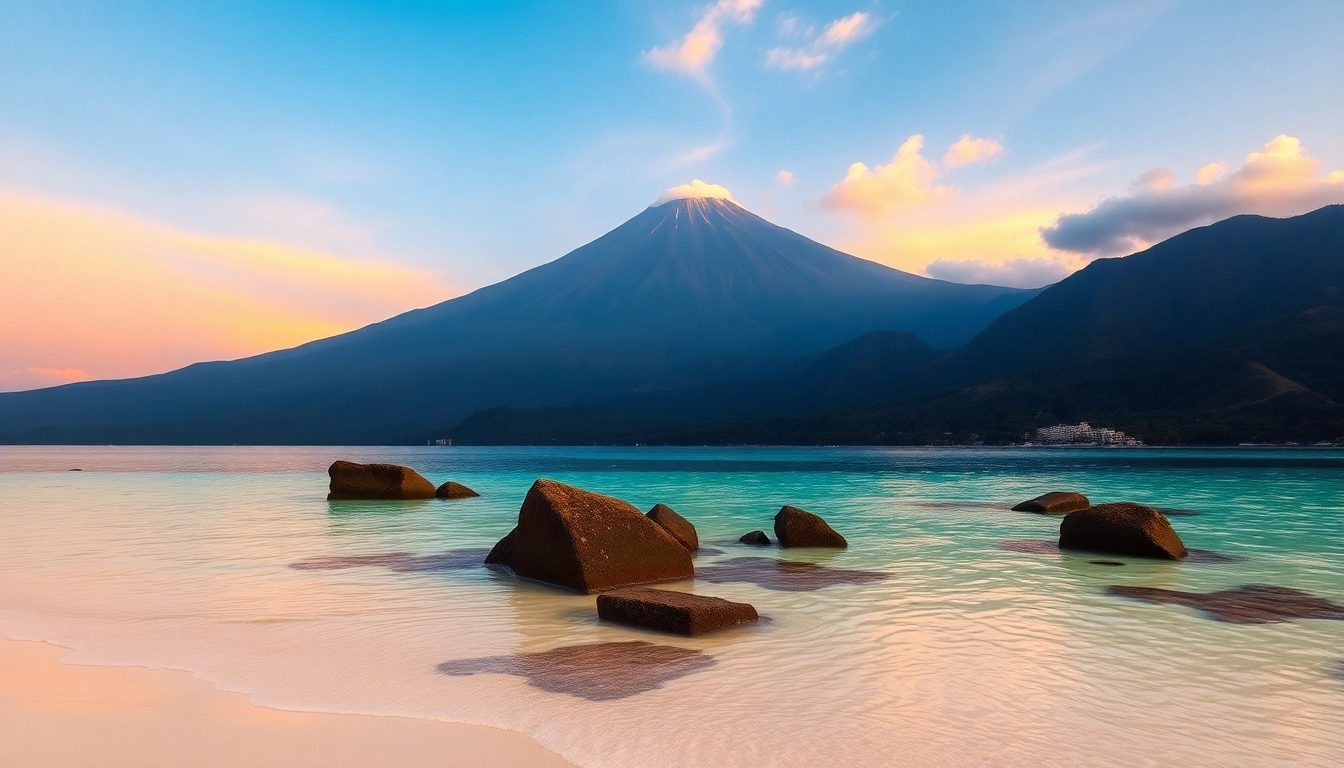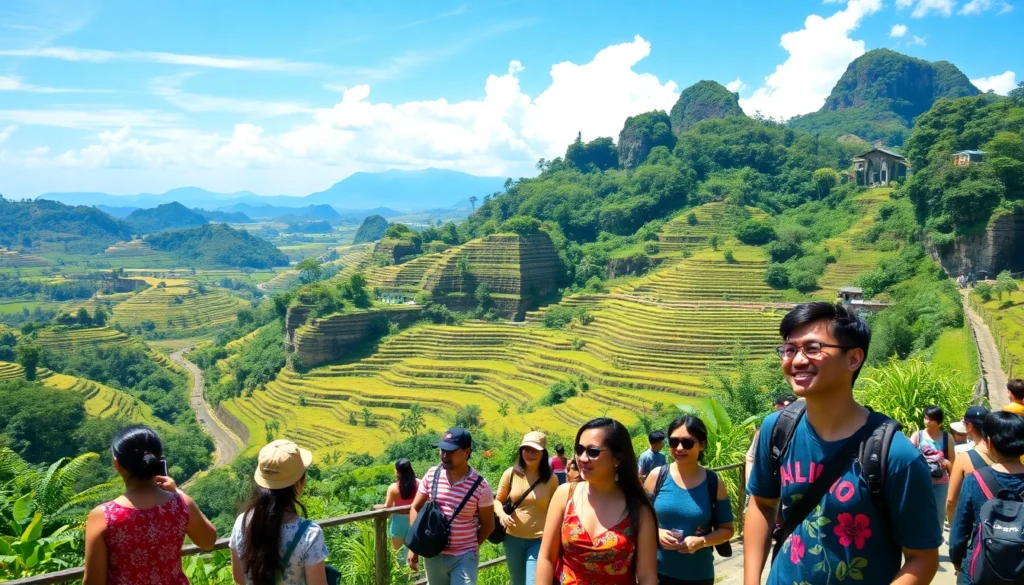Introduction to Lombok: Indonesia’s Spectacular Island
Nestled within the renowned Lesser Sunda Islands, Lombok is a captivating Indonesian island that offers a harmonious blend of pristine natural landscapes, vibrant cultural traditions, and adventure-packed pursuits. With a population surpassing four million residents and a rich history rooted in indigenous Sasak culture, Lombok stands as a compelling destination for travelers seeking both serenity and adrenaline.
Intensively shaped by its geographical features and historical evolution, Lombok features towering volcanoes, expansive beaches, lush forests, and authentic local villages. Its strategic location near Bali further amplifies its appeal, making it an accessible jewel for international visitors. This article delves into the multifaceted aspects of Lombok—from its natural wonders and past to contemporary travel tips—providing a comprehensive guide to exploring this remarkable Indonesian paradise.
Geographical Overview and Key Highlights
Geographical Context and Landscape Diversity
Lombok is situated east of Bali, separated by the Lombok Strait, and covers an area of approximately 4,700 square kilometers. It forms part of Indonesia’s Nusa Tenggara Barat province. The island’s topography is dominated by mountainous terrain, notably the iconic Mount Rinjani, Indonesia’s second-highest volcano at 3,726 meters. The landscape features volcanic craters, fertile valleys, and dense rainforests, which contribute to a diverse ecology.
Climate and Weather Patterns
Lombok experiences a tropical climate characterized by two primary seasons: the dry season (April to October) ideal for outdoor activities, and the rainy season (November to March) which brings lush greenery but also humid conditions. Understanding these patterns is essential for planning trips, especially for trekking Mount Rinjani or enjoying beach outings.
Regional Divisions and Key Areas
The island is administratively divided into several regencies, each with unique characteristics:
- Lombok Barat (West Lombok): Known for its stunning beaches like Tanjung Aan and Senggigi, as well as the Bengkulu coastal region.
- Lombok Tengah (Central Lombok): Home to Mount Rinjani and numerous cultural sites.
- Lombok Utara (North Lombok): Featuring the scenic Gili Islands and traditional villages.
- Lombok Timur (East Lombok): Known for its agricultural landscapes and access to the autonomous island of Satun.
Historical and Cultural Context
Origins and Indigenous Heritage
Lombok’s history is deeply intertwined with the Sasak people, the predominant indigenous ethnolinguistic group. Their ancestral roots date back thousands of years, with a rich oral tradition that encompasses mythology, customary laws (adat), and craftsmanship. Historically, Lombok was influenced by neighboring Bali and Sumbawa, leading to a cultural mosaic of animist beliefs, Hindu remnants, and Islamic practices.
Colonial and Modern Influences
During the colonial era, Portuguese and Dutch influences touched Lombok, mainly in trade and administrative structures. Post-independence, the island has maintained a balance between traditional customs and modernization, promoting cultural preservation through festivals, dances, and handicrafts.
Cultural Heritage and Symbols
Unique symbols such as the Sasak architecture, traditional weaving (songket fabrics), and rituals like the *Perese* dance form part of Lombok’s cultural identity. Festivals, notably the Meshir Festival and local rites, provide immersive experiences into local spirituality and social cohesion.
Why Lombok Stands Out Among Indonesian Destinations
Unmatched Natural Beauty
Unlike many popular Indonesian islands, Lombok boasts a tapestry of outstanding natural attractions—from the towering summit of Mount Rinjani to the tranquil turquoise waters of the Gili Islands. Its beaches are less crowded yet equally stunning, perfect for both relaxation and water sports.
Cultural Authenticity and Heritage
Lombok offers a more traditional experience compared to the heavily touristed Bali. Visitors can explore local Sasak villages, witness traditional weaving, and participate in ceremonial rites that have been practiced for generations.
Adventure and Eco-Tourism Opportunities
The island is a haven for adventure seekers: volcano trekking, diving, surfing, and jungle treks are all available within accessible regions. Conservation efforts focus on protecting its unique ecosystems, encouraging eco-tourism practices that benefit local communities and environments.
Affordability and Accessibility
Relative to Bali and Jakarta, Lombok offers more affordable options in accommodations, dining, and tours. Its proximity to Bali also makes it an easy extension for travelers seeking diverse experiences within Indonesia.
Top Attractions and Natural Wonders in Lombok
Mount Rinjani: Hiking and Adventure Opportunities
Rising majestically at 3,726 meters, Mount Rinjani is Indonesia’s second-highest volcano and a magnet for trekkers worldwide. The Rinjani National Park encompasses lush forests, crater lakes such as Segara Anak, and hot springs, creating a captivating multisensory adventure. The multi-day trekking routes vary from moderate to challenging, often requiring guide services due to volcanic activity and rugged terrain.
Successful ascents demand proper preparation—navigation skills, physical conditioning, and suitable gear—but reward hikers with panoramic views, volcanic landscapes, and a sense of accomplishment. Many tour operators also offer night treks, allowing visitors to witness sunrise from the crater rim.
Beaches and Islands: Gili Trawangan, Gili Air, and Gili Meno
The Gili Islands—comprising Gili Trawangan, Gili Air, and Gili Meno—are world-renowned for their white sandy beaches, crystal-clear waters, and vibrant marine life. Gili Trawangan is the largest and most lively, famous for nightlife and diving; Gili Air offers a more laid-back vibe suitable for relaxation and snorkeling; Gili Meno is perfect for quiet retreats and turtle conservation.
These islands are ideal for water activities: scuba diving, snorkeling with turtles and reef sharks, paddleboarding, and glass-bottom boat tours. Transportation between the main island and Gili Islands is predominantly by boat, with options ranging from traditional fisherman’s boats to speedboats.
Waterfalls, Jungles, and Conservation Areas
Lombok’s interior features stunning waterfalls such as Sendang Gile and Tiu Kelep, located near Mount Rinjani. Accessible via guided jungle treks, these cascading waters provide refreshing escapes amid lush greenery.
The island’s conservation efforts include protecting endemic wildlife like the ebony leaf monkey and preserving its coral reefs and forests. Visiting eco-reserves like the Gunung Rinjani National Park offers insight into sustainable tourism practices and environmental stewardship.
Experience Lombok’s Rich Culture and Local Traditions
Traditional Sasak Villages and Cultural Tours
Visiting traditional Sasak villages such as Sade, Rambitan, and Sukarara provides a window into local life, customs, and craftsmanship. These villages often feature houses with distinctive alang-alang roofs, communal spaces, and weaving workshops.
Cultural tours may include participatory activities like weaving, traditional cooking, and witnessing ceremonies such as the *Perese* stick-fighting dance, an integral part of Sasak heritage. Engaging directly with local communities fosters genuine cultural appreciation and sustainable tourism.
Local Cuisine and Tribal Handicrafts
Lombok’s culinary landscape combines spicy influences with fresh ingredients. Signature dishes include *Ayam Taliwang* (spicy grilled chicken), *Plecing Kangkung* (water spinach with chili sauce), and tropical fruits like mangosteen and rambutan. Markets and street vendors serve up authentic flavors curated for adventurous palates.
Handicrafts such as woven textiles, silver jewelry, and carved wood are abundant in local markets, supporting traditional artisan skills and enabling visitors to take home meaningful souvenirs.
Festivals and Cultural Events in Lombok
Festivals like the Bau Nyale, which celebrates the hunts for sea worms believed to be the reincarnation of Princess Mandalika, draw visitors from all over. These events showcase traditional music, dance, and attire, offering immersive cultural experiences. Participating respectfully in these celebrations deepens understanding of local beliefs and social fabric.
Practical Travel Tips for Visiting Lombok
Best Time to Visit and Climate Considerations
The optimal period to visit Lombok is during the dry season, from April to October, when weather conditions favor outdoor adventures, beach lounging, and diving excursions. However, shoulder months like April and October often feature less crowded attractions and favorable weather.
During the rainy season, pathways can become muddy, and occasional storms may impact travel plans, especially for mountain treks. Visitors should adapt accordingly, packing appropriate gear and checking local weather forecasts.
Getting There: Flights, Ports, and Transportation
Lombok’s main gateway is Lombok International Airport (YPI), serving regional and international flights, notably from Bali, Jakarta, and some Southeast Asian hubs. Alternatively, ferries operate between Bali and Lombok, offering scenic routes for those already exploring Indonesia.
Once on the island, transportation options include rental scooters, private drivers, and tour packages. Many areas are accessible via paved roads, but some remote locations require 4WD vehicles.
Accommodations, Local Etiquette, and Safety Tips
Lombok’s accommodation range spans luxury resorts, boutique hotels, homestays, and budget hostels. It’s advisable to choose eco-friendly options that support local communities. Respect for local customs, dress modestly in village areas, and seek permission when photographing locals.
Health and safety precautions include drinking bottled water, using reef-safe sunscreen, and being cautious with motorbike rentals. Travelers should also stay updated on volcanic activity, especially when planning mountain excursions.
Planning Your Itinerary: From Adventure to Relaxation
Activities for Adventure Seekers and Nature Lovers
A typical adventure itinerary could involve trekking Mount Rinjani, exploring waterfalls, and diving at Gili Air. For nature lovers, spending days hiking through forests or birdwatching in conservation parks offers enriching experiences.
For example, an organized multi-day trek combines camping by the crater lake and exploring volcanic landscapes. Guided eco-tours focus on minimal-impact exploration, emphasizing environmental education.
Relaxing at Pristine Beaches and Wellness Resorts
Post-adventure, visitors can unwind on beaches like Selong Belanak or Tanjung Aan, known for their soft sands and calm waters. Wellness resorts and spas offer traditional treatments, yoga, and meditation, fostering holistic relaxation.
These tranquil settings are perfect for snorkeling, sunset watching, and savoring fresh seafood while enjoying the island’s natural beauty.
Customizing Your Lombok Trip for a Memorable Experience
The key to an unforgettable Lombok visit is customizing activities based on interests—whether cultural immersion, eco-tourism, or adventure sports. Many operators offer personalized packages, including private guides, cooking classes, and community-based tourism experiences.
Incorporate slow travel principles: decompress at local villages, participate in traditional ceremonies, and explore lesser-known regions to create authentic memories.

